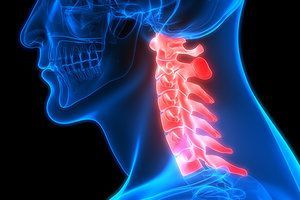New York's highest court of appeals has held that no-fault insurers cannot deny no-fault benefits where they unilaterally determine that a provider has committed misconduct based upon alleged fraudulent conduct. The Court held that this authority belongs solely to state regulators, specifically New York's Board of Regents, which oversees professional licensing and discipline. This follows a similar recent ruling in Florida reported in this publication.
Unlocking the Secrets of the Cervical Spine (Pt. 1)
In a previous series of articles several years ago, I outlined how predictable patterns affect movement direction, position and posture of the pelvis, lumbar spine and thorax.1-2 The cervical spine is no exception, affected by predictable patterns that drive its position or orientation from the first thoracic vertebra to the atlanto-occipital junction. The alignment and position of the cervical spine is directed neurologically and influences cranial position and strain patterns, as well as patterns of occlusion.3
This series of articles offers a fresh and innovative way of looking at the cervical spine and what determines its position and alignment. Let's start by providing a context to build from that describes another useful paradigm to assess and treat the cervical spine.
Our early pioneers in chiropractic, specifically B.J. Palmer, were acutely aware of the neurologic significance of the upper cervical spine and cranium. They observed a relationship with disease and alignment of not only the cervical spine, but also the entire axial skeleton. He and pioneering chiropractors developed techniques to treat subluxation of the A/O joint and discovered that many conditions improved as a result of adjusting the upper cervical region.

What had yet to be discovered 100 years ago was a mountain of evidence available in research and peer-reviewed articles from chiropractors, osteopaths, dentists and practitioners of a myriad of other disciplines. The early DCs were clearly on to something significant. However, their ability to expand their knowledge and skill was limited by their time in history, as we are limited by ours.
The ever-expanding availability of evidence provided by an interdisciplinary approach including the above-mentioned professions opens a door to the relationship of the cervical spine as it directs the cranium and jaw. The neck, cranium and jaw have what is known as a "top-down" effect or positional drive on the rest of the body. Occlusion can also have a profound effect on posture and promote the formation of scoliosis.4
The Fifth Appendage
For starters, the neck can be considered the "fifth appendage"3 after the arms and legs. This fifth appendage has two main openings. The anterior one is needed for airway, nutrition and voice. The other opening inside the cervical spine starts from the top down at the foramen magnum and includes the brainstem, spinal cord and loads of autonomic innervation.
The highly neurologic quality of the cervical spine beginning with the brainstem at the A/O joint while expanding to the cortex helps us maintain balance while walking including all varieties of dynamic positional awareness. Autonomic function directing all systems is integrated within the spinal canal and outside of it as well. For example, the vagus nerve has intimate approximation with the transverse process of the atlas from its beginnings inside the cranium.
Included within the neck is lymph flow and major blood supply and drainage via the carotid arteries and jugular veins. Highly sensitive vascular structures (the vertebral arteries) pass through the transverse processes of the cervical spine from C6 to C1, then into the cranium. The integrity of the vertebral arteries is of particular concern to all of us regarding VBI.
This overview of the cervical spine, or fifth appendage, begins to reveal the reverence chiropractors have for the most important region of the spine. With all of the vital structures and functions located in the neck, it also must support a head and be able to maintain a fixed position via a vestibular-ocular reflex, or VOR, while the body is moving underneath.5
The neck needs to oscillate side to side and turn freely, revolve and rotate while supporting a head and maintaining homeostasis with every system in the body at any given moment of movement or rest.
Two Necks to Consider
The next important concept that needs to be understood is that there are two necks.3 As I will discuss in further detail in part 2, polyarticular chains of muscles exist on either side of the neck.
It is important to know that muscles one side of the neck become dominate and will determine position and alignment of the cervical spine, especially the atlas as it relates to the occipital bone. This alignment or position of the A/O joint is influenced by respiration, occlusion, vision and past history of injury and trauma. In upcoming parts of this series, I will describe objective testing and treatment to help your patients shift side to side and more freely rotate their cervical spines.
References
- George R. "Unlocking Secrets of the Pelvis." Dynamic Chiropractic; Pt. 1: Aug. 15, 2013, Pt. 2: Oct. 1, 2013, Pt. 3: Dec. 1, 2013, Pt. 4: Jan. 15, 2014.
- George R. "Breathe Well and Often." Dynamic Chiropractic; Pt. 1: June 17, 2012, Pt. 2: July 15, 2012, Pt. 3: Sept. 9, 2012, Pt. 4: Oct. 7, 2012.
- Hruska R. Cervical Revolution Course Concepts; lecture notes, Feb. 23, 2019.
- Cuccia C, Caradonna C. The relationship between the stomatognathic system and body posture. Clinics, 2009;64(1):61-66.
- "Cervical Revolution: An Integrated Approach to the Treatment of Patterned Cervical Pathomechanics." Postural Restoration Institute course notes, pg. 40.



